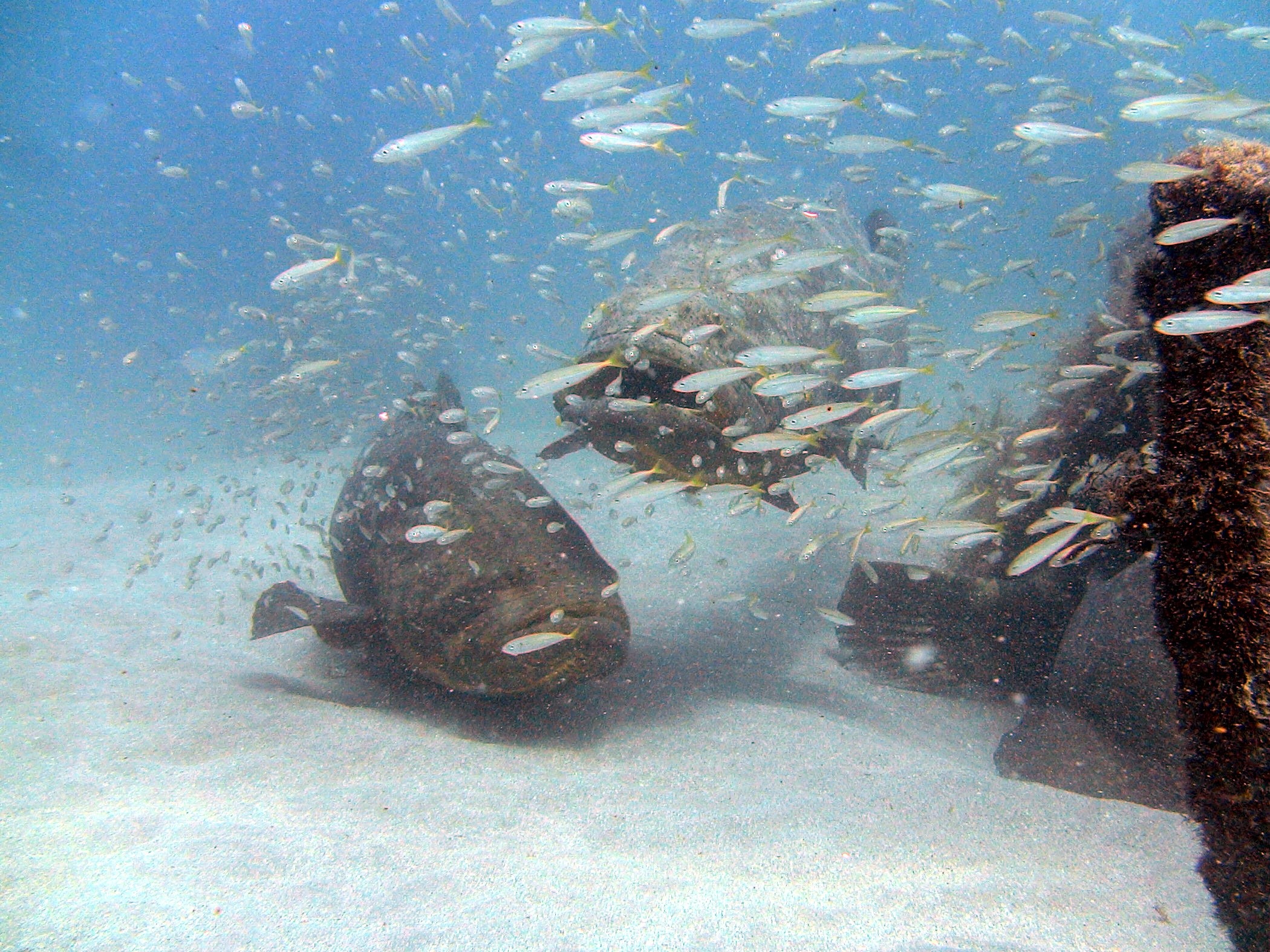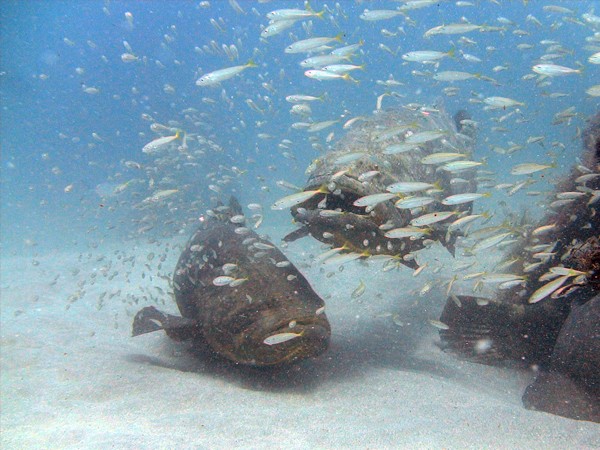 Many species of fish in the Gulf of Mexico like this goliath grouper come together and form dense aggregations to spawn. Scientists will begin to compile existing data on these aggregations to get a better understanding of the fisheries, which can help resource managers figure out just how many fish really are in the sea. Credit: Nick Farmer, NOAA.Every angler dreams of casting into a giant swarm of densely packed fish. These fish frenzies can occur when fish come together at specific times and locations to spawn and reproduce. Some of the most important fisheries (groupers, snappers, drums and croakers) form these types of spawning aggregations. However, little is known about spawning aggregations in the Gulf of Mexico. A diverse group of scientists hope to change that by compiling and evaluating existing information on spawning aggregations in the Gulf as the basis to design a cooperative, Gulf-wide monitoring network focused on this important aspect of commercial and recreational fisheries.
Many species of fish in the Gulf of Mexico like this goliath grouper come together and form dense aggregations to spawn. Scientists will begin to compile existing data on these aggregations to get a better understanding of the fisheries, which can help resource managers figure out just how many fish really are in the sea. Credit: Nick Farmer, NOAA.Every angler dreams of casting into a giant swarm of densely packed fish. These fish frenzies can occur when fish come together at specific times and locations to spawn and reproduce. Some of the most important fisheries (groupers, snappers, drums and croakers) form these types of spawning aggregations. However, little is known about spawning aggregations in the Gulf of Mexico. A diverse group of scientists hope to change that by compiling and evaluating existing information on spawning aggregations in the Gulf as the basis to design a cooperative, Gulf-wide monitoring network focused on this important aspect of commercial and recreational fisheries.
Dr. Brad Erisman, Assistant Professor at The University of Texas Marine Science Institute in Port Aransas and lead scientist on the project, will team up with scientists from around the Gulf to work with the National Oceanic and Atmospheric Administration (NOAA) Fisheries, state agencies, commercial fishermen, and recreational anglers to generate the very first comprehensive baseline of available information spawning aggregations and their fisheries in the Gulf. They will do so by reviewing existing monitoring programs and data throughout the Gulf and then follow up with workshops to identify key information gaps. To synthesize all of this immense amount of information, the team will also create reports that outline and prioritize future research, monitoring, and management needs for spawning aggregations in the Gulf of Mexico.
Similar to elsewhere in the world, fish spawning aggregations in the Gulf of Mexico are integral to a healthy ocean and these aggregations support the most productive and lucrative fisheries in the region. Therefore, improving monitoring, assessments, and management of spawning aggregations are a top priority for the Gulf of Mexico. This project focuses on creating a pathway to support the sustainable management of fish spawning aggregations in the Gulf for the benefit of both recreational and commercial fisheries. Likewise, it seeks to coordinate with existing monitoring programs, incorporate its findings into existing data portals, and compliment current efforts of federal, regional, and stage agencies.
The project is funded by the National Oceanic and Atmospheric Administration’s (NOAA) RESTORE Act Science Program and will be completed in partnership with LGL Ecological Research Associates, the Gulf Coast Ocean Observing System, NOAA Fisheries Service - Southeast, Florida Fish and Wildlife Conservation Commission, and The Nature Conservancy. The scientists anticipate that results of the project will be completed and publicly available by August 2017.









